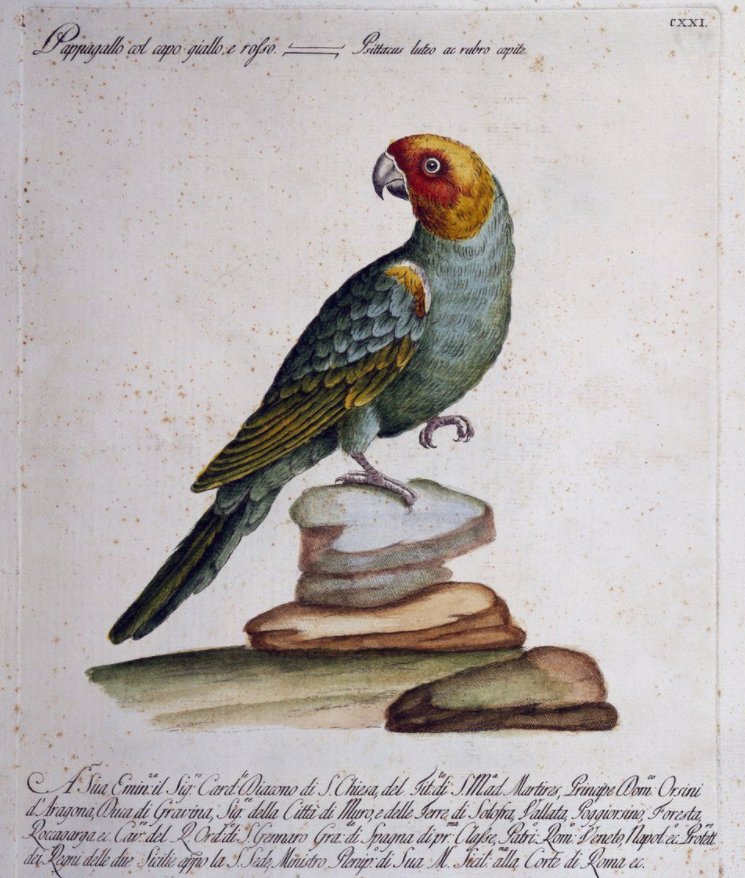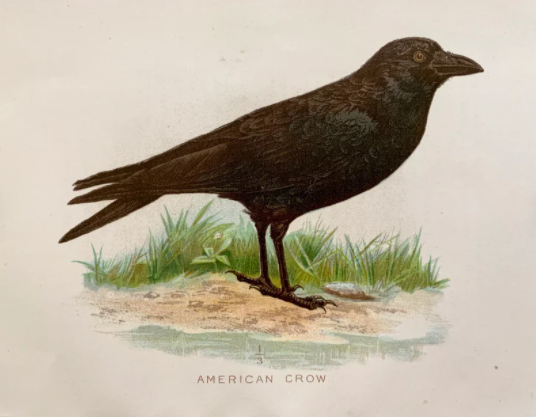The Farmer and the Parrot
By Anonymous
Annotations by Karen Kilcup

There once lived, in a small village, a farmer who kept a parrot, which was in the habit of keeping bad company. One day, after the farmer had finished planting his corn, the crows, together with the parrot, soon occupied themselves with feasting upon it. The farmer, seeing this, resolved to punish the black robbers. Seizing his gun, he crept slyly along the fence until he came within a few yards of them, and then fired. Walking over to the corn to see what effect the shot produced, to his great surprise, he found that he had wounded his parrot. Poor Polly was taken home and kindly cared for. The children asked their father how the parrot came to be shot. “Bad company,” answered the father; “Bad company,” repeated Poll.
Afterwards, whenever the parrot would see the children quarreling and wrangling among themselves, Poll would cry out, “Bad company! Bad company!”
Thus, dear young readers, when you are tempted to associate with bad companions, remember the story of the parrot and its punishment.

Anonymous. “The Farmer and the Parrot.” The Youth’s Companion 5, no. 1 (October 1881): 112.
Contexts
Begun in 1881, The Youth’s Companion—a name that many nineteenth-century publications shared—was a monthly student magazine that published articles written by pupils of the Catholic-run boarding school located on the Tulalip Indian Reservation. A federally recognized tribe located in the mid-Puget Sound area, the Tulalip Tribes received reservation lands—22,000 acres—in 1855, with its legal boundaries established by President Ulysses S. Grant in 1873. According to the tribe’s website, “it was created to provide a permanent home for the Snohomish, Snoqualmie, Skagit, Suiattle, Samish, and Stillaguamish Tribes and allied bands living in the region.”
Nineteenth-century Indian boarding schools aimed to assimilate Native Americans into white culture. They separated children from their families, required students to dress like white Americans, and prohibited them from speaking their language. They also emphasized so-called “industrial” training: boys learned agricultural and industrial skills, while girls learned how to cook, sew, and clean a household. Students were often expected to become servants or to provide manual labor help for whites.
Like many contributions to Native American newspapers, this sketch was published anonymously. Students living on reservations during this time often received educations governed by white religious authorities who emphasized moral training. This story typifies the didactic texts that students were expected to compose. Its humor, however, suggests the author may be resisting the “parroting” of conventional morality.
Resources for Further Study
- Kalliber, Kim, “Seattle Continues Healing ‘Deep Wounds’ With Boarding School Resolution,” Tulalip News, October 20, 2015.
- King, Marsha. “Tribes confront painful legacy of Indian boarding schools,” Seattle Times,February 3, 2008.
- Marr, Carolyn J. “Assimilation Through Education: Indian Boarding Schools in the Pacific Northwest,” University of Washington Libraries Digital Collection. This article includes historical contexts and features “A Typical Daily Schedule.”
- ———. “Between Two Worlds: Experiences at the Tulalip Indian Boarding School, 1905-1932,” Hibulb Cultural Center & Natural History Preserve.
Contemporary Connections
“Tulalip History Minute 04—The Tulalip Indian School presented by Mary Jane Topash,” the Tulalip History Project. Provides Tulalip-sponsored background on the tribe.
“Editorial: Getting to the truth of Tulalip boarding school,” September 26, 2021, HeraldNet (Everett, Washington). Caution: includes information about abuses at the school.